How to connect a dishwasher to water supply and sewerage
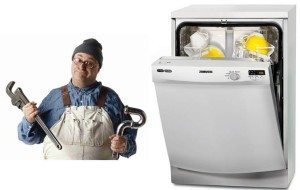 Having bought a long-awaited dishwasher, you are wondering whether to call a professional to install it or connect it to the communications yourself, saving $10. In general, if you have a set of tools and the skills to work with them, then connecting a dishwasher should not cause much difficulty. In addition, armed with detailed instructions, it will be even easier to cope.
Having bought a long-awaited dishwasher, you are wondering whether to call a professional to install it or connect it to the communications yourself, saving $10. In general, if you have a set of tools and the skills to work with them, then connecting a dishwasher should not cause much difficulty. In addition, armed with detailed instructions, it will be even easier to cope.
Preparation for installation
Connecting the dishwasher to the water supply should begin with an inspection of the still packaged equipment. Already at this stage you can understand whether the car was packed correctly and whether it was damaged during transportation. It is enough to shake the box and listen - there should be no sounds or knocks, otherwise, something is broken in it, which means that such a car should not even be accepted.
Having verified by indirect evidence that the dishwasher is in order, you need to unpack the box and bring the unit into the kitchen. Next, check the presence of a drain and inlet hose, which should be supplied with the machine. Make sure they are long enough to connect and install the dishwasher in the location you planned. It is important that the hoses are not tight, but not too long.
For your information! Typically, the original hoses are 1.5 m long, which in most cases is enough to connect the dishwasher near the sink to hot and cold water, as well as to the sewerage system.
Think about what tools you may need, everything will depend on what kind of pipes are installed for hot and cold water supply (metal or metal-plastic).Screwdrivers, pliers, and an adjustable wrench may come in handy.
The following components may be required:
- siphon with two outlets, if a washing machine is also connected to the dishwasher;
- if you have standard pipes, then a ¾-inch tee (or maybe two tees, if you also need to connect to hot water; for non-standard pipes, you need to take a tee with a transition diameter);
- faucet with a diameter of ¾ inches;
- a filter for water purification (not necessary, but with it the dishwasher can last longer);
- winding tape;
- if necessary, you may need extension hoses, clamps and connecting adapters, and you can read about how to extend hoses in the article Replacing the drain and inlet hose.
Important! Before connecting the dishwasher to the sewerage system and water supply, you need to read the instructions included with the appliance and find out what kind of water the inlet hose is connected to, cold or hot.
In general, the use of hot water is not recommended, since its quality is much worse than cold water, because it contains many mechanical impurities, and this can negatively affect the operation of the machine.
Connecting the water supply
Once you've prepared everything you need, move the dishwasher closer to the place where it will be permanently installed. You need to install it so that the length of the hoses is enough to drain the water supply and sewerage. At the same time, it should be convenient for you to work when connecting the hoses.
The inlet hose is connected to the machine quite simply. A nut with a fitting is screwed onto the outlet for the inlet hose, located at the back of the dishwasher at the bottom or top, depending on the model. The second end must be connected to cold or hot water. How to do it? In one of two ways:
- connect via mixer;
- crash into a hot or cold water pipe.
In our opinion, it makes more sense to connect the dishwasher directly to hot and cold water than through a mixer; this method is more reliable. The first method is more universal; this is done in most cases.
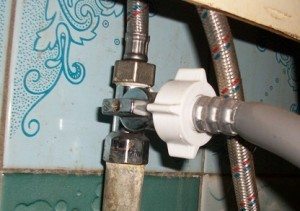 We will describe both connection options. So, turn off the water supply to the apartment and get to work:
We will describe both connection options. So, turn off the water supply to the apartment and get to work:
- unscrew the cold water hose going to the mixer from the hot or cold water pipe (depending on what you connect to);
- install a tee into the water supply pipe;
- Screw the hose from the mixer to one part of the tee, and the tap to the other;
- If necessary and at your request, connect a deep water filter to the tap;
- Connect the machine's inlet hose to the filter; if there is no filter, screw the hose to the tap.
Important! FUM tape must be wound onto all threaded connections.
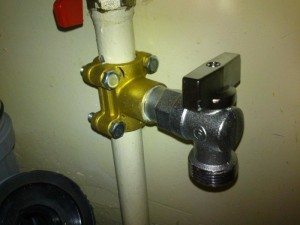 In the case where the cold water pipe runs next to the dishwasher, you don’t have to pull the fill hose to connect to the mixer, but cut into the pipe. To do this, you need to turn off the water, and then:
In the case where the cold water pipe runs next to the dishwasher, you don’t have to pull the fill hose to connect to the mixer, but cut into the pipe. To do this, you need to turn off the water, and then:
- using a grinder and other special tool, you need to cut the pipe to fit the release coupling;
- then install the coupling,
- connect a ball valve to the coupling;
- Screw the dishwasher inlet hose onto the faucet.
If you need to connect several devices to one water supply pipe, you will need two tees, which can be connected as follows.

When there is no running water in the house, for example, in a country house, it is still possible to connect the dishwasher to water, although this is inconvenient. To do this, you will need a tank with a capacity of 20-30 liters of water, which must be placed in the attic (at a height of 2-3 m) to create a water pressure of at least 0.1 MPa.A pipe is inserted at the bottom of the tank, and the dishwasher inlet hose is connected to the pipe.
Connection to sewerage
Some naively believe that connecting a dishwasher to the sewer is the simplest thing. Whatever, I stuck the drain hose into a siphon or into a sewer pipe, and that’s the end of it, it’s not like connecting a dishwasher to hot or cold water. This statement is extremely naive. Connecting to a sewer may indeed seem simpler than connecting to hot water, but it also has nuances that cannot be ignored.
- The hose should not be too long. If its length exceeds 1.5-2 meters, this will lead to the fact that the drain pump will not work even half of its service life, since the load on it will be prohibitive.
- The hose connected to the sewer must have the correct bend and slope. If this is not done, then due to the siphon effect (the return of water from the sewer back to the machine’s reservoirs), the dishwasher will quickly fail.
- If the hose is inserted directly into the sewer pipe, then you cannot leave a gap between its walls and the walls of the pipe. Otherwise, the dishwasher pump will begin to pump out water under pressure, and the water will splash out of the pipe onto the floor, forming a large puddle on the floor.
So, to connect the dishwasher to the sewer, you need to do a couple of steps depending on the method you choose. If waste water is discharged into the sewer through a siphon outlet, the scheme is as follows:
- We move the dishwasher a little so that it is convenient to work.
- We take the end of the drain hose, put it on the outlet of the siphon, which is located exactly under the sink, and tighten it with a clamp.
- We bend the hose with the elbow up at the siphon itself, and then make a downward bend at the base of the dishwasher. That's all!

If you decide not to bother with the siphon or you already have a siphon without taps, but you don’t want to change it to another one, you can stick the end of the drain hose directly into the pipe. The scheme is like this.
- We pull out the dishwasher so that there is access to communications.
- We insert the end of the drain hose into the outlet of the sewer pipe, and then wrap the joint with electrical tape. Not very aesthetically pleasing, but cheap, reliable and practical.
- We bend the hose in the same way as we described above - the work is finished.
In addition, you may need to organize the drainage of two dishwashers and washing machines at once, then the siphon connected to the sink should have two outlets. It will roughly look like this:

After connecting the water supply and sewerage, be sure to check the dishwasher. To do this, turn on the wash mode and listen to the operation of the machine. There should be no extraneous sounds. Also, inspect all water and drain connections to ensure there are no leaks.
In conclusion, we note that, in general, connecting a dishwasher to water supply and sewerage is not so difficult. But, as in any work, there are nuances that you should definitely pay attention to. Otherwise, everything may end either in the failure of the dishwasher or in flooding. It’s better to avoid both – do everything right!
Interesting:
2 reader comments
Add a comment Cancel reply
Categories
Washing machine repair


For buyers

For users

Dishwasher


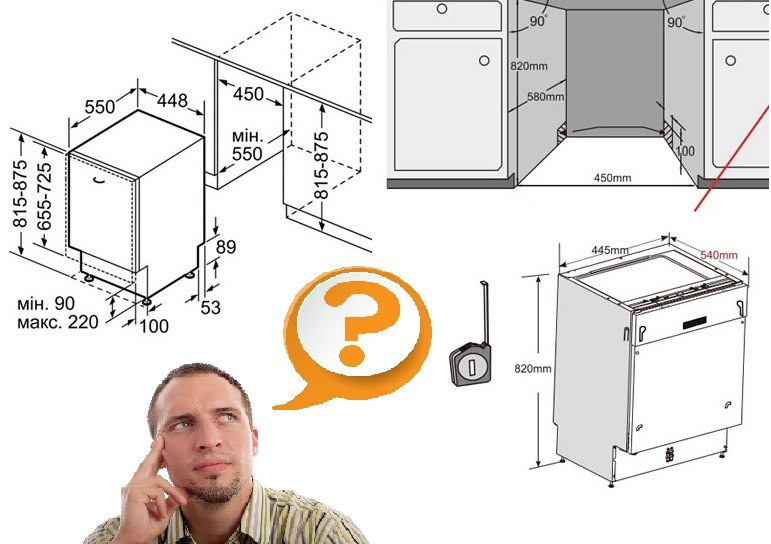

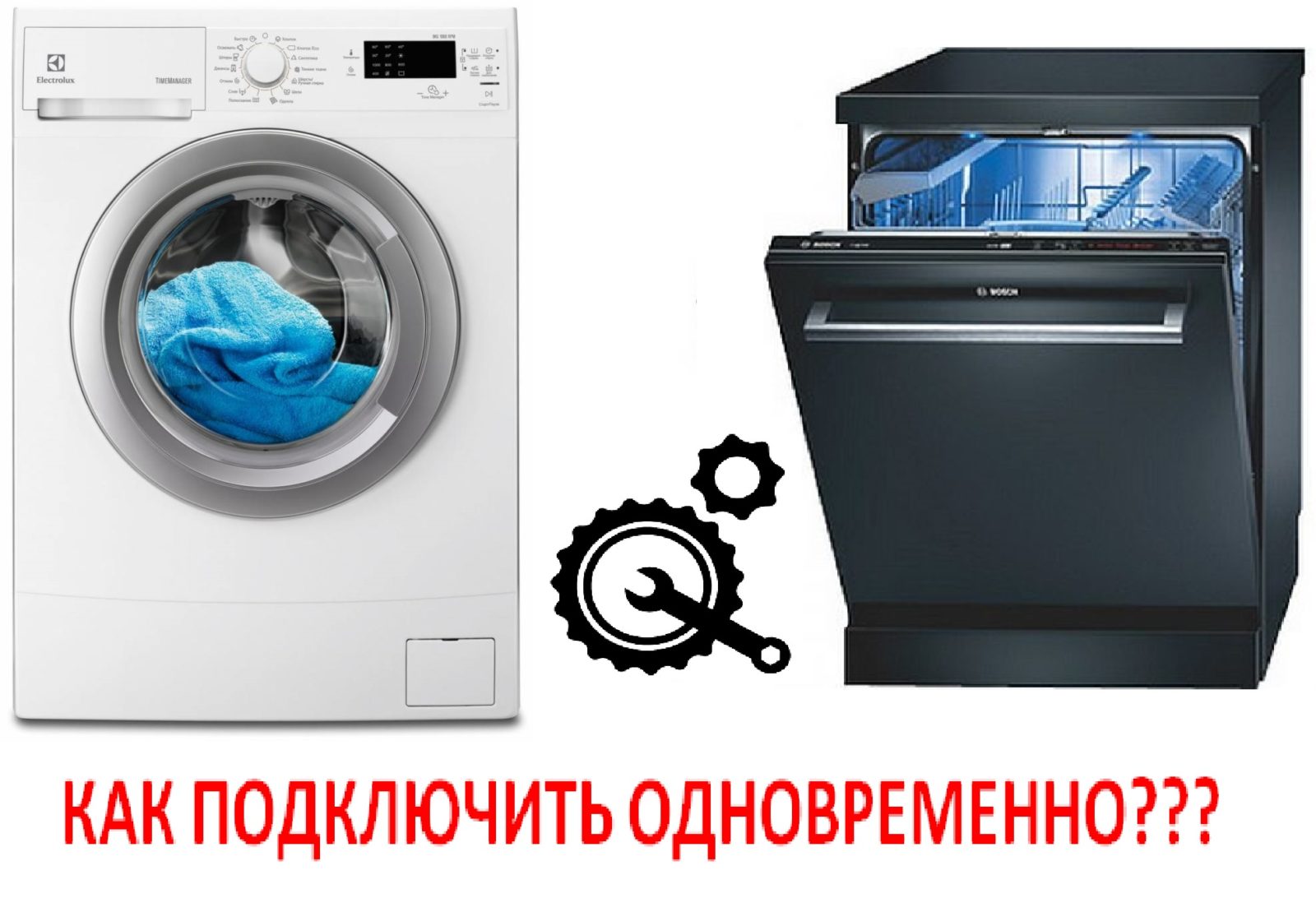
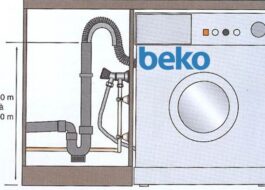











Good article, detailed
Great article! Thank you!